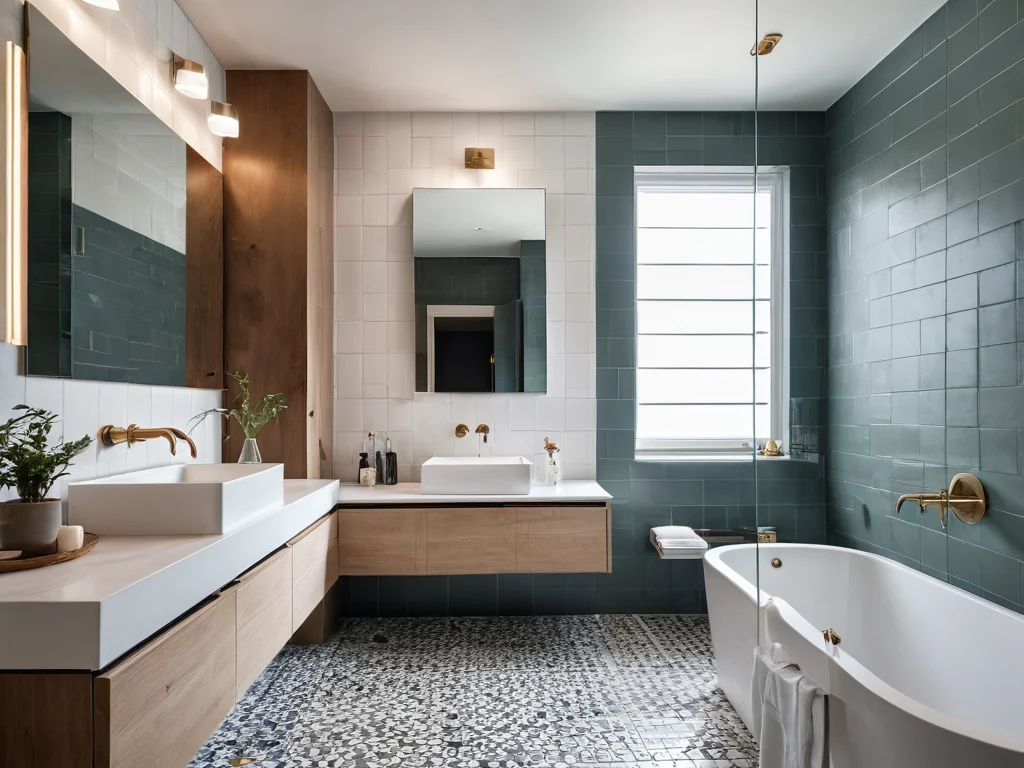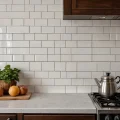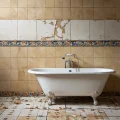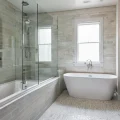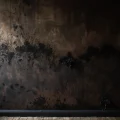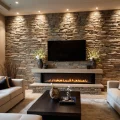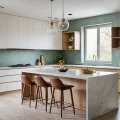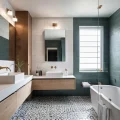Greetings, dear readers of design-foto.ru! Today we will discuss what is perhaps the most pressing issue for everyone planning a bathroom renovation: what to choose for wall decoration – traditional tile or fashionable paint? This choice often seems difficult, as you want the bathroom to be not only beautiful and stylish, but also practical, durable, and, of course, safe. We will delve into all the nuances, consider the pros and cons of each option, and provide practical advice so you can make a well-informed decision that will bring you joy for years to come.
The bathroom is a special room in our home. It has high humidity and frequent temperature fluctuations, which means the requirements for finishing materials are the strictest. The appearance of your bathroom, its durability, and your health all depend on the correct choice of materials. Therefore, this issue should be approached with maximum responsibility and attention to detail. Let’s begin our dive into the world of tile and paint to dispel all doubts once and for all.
Tile in the Bathroom: Eternal Classic or Outdated Choice? Pros and Cons
Tile is, undoubtedly, a traditional and time-tested material for bathroom finishes. It is loved for its durability, moisture resistance, and variety of designs. But is everything so straightforward? Let’s break it down.
Advantages of Tile:
- Moisture Resistance: Ceramic tiles or porcelain stoneware absorb virtually no moisture, making them an ideal choice for damp rooms. This is their main advantage over many other materials.
- Durability and Longevity: High-quality tile is resistant to mechanical damage, abrasion, and scratches. With proper care, it can last for decades, retaining its original appearance.
- Hygiene: Tile does not absorb odors, and bacteria and mold do not multiply on it, which is especially important for a bathroom. The smooth surface is easy to clean.
- Variety of Designs: There is a huge variety of tiles on the market – from classic ceramics and porcelain stoneware to mosaics, natural stone, and imitations of various textures (wood, concrete, metal). You can find an option for every taste and budget.
- Ease of Maintenance: For cleanliness, regular wet cleaning with ordinary detergents is sufficient.
- Heat Resistance: Tile is not afraid of high temperatures, which is relevant, for example, when using underfloor heating systems.
Disadvantages of Tile:
- Installation Complexity: Laying tile is a labor-intensive process that requires certain skills and accuracy. Improper installation can lead to adhesion problems, cracks, and even tile delamination.
- Cold Surface: Tile itself is a cold material. For comfort, it is often necessary to install an underfloor heating system.
- Grout Lines: There are grout lines between tiles that require special care. Over time, they can become dirty, darken, and mold can form if high-quality grout is not used and regular cleaning is not performed.
- Price: High-quality tile, especially from well-known brands or with original designs, can be quite expensive. Added to this is the cost of adhesive, grout, and the tiler’s work.
- Hardness: An object dropped on the tile (e.g., a shampoo bottle) will most likely break.
- Demolition Difficulty: If you want to change the design, demolishing old tile is a rather dusty and labor-intensive process.
Overall, tile remains a reliable and practical choice, especially if you value durability, ease of maintenance, and are prepared for a higher initial cost and labor intensity.
Paint for the Bathroom: Modern Trend or Whim? Advantages and Disadvantages
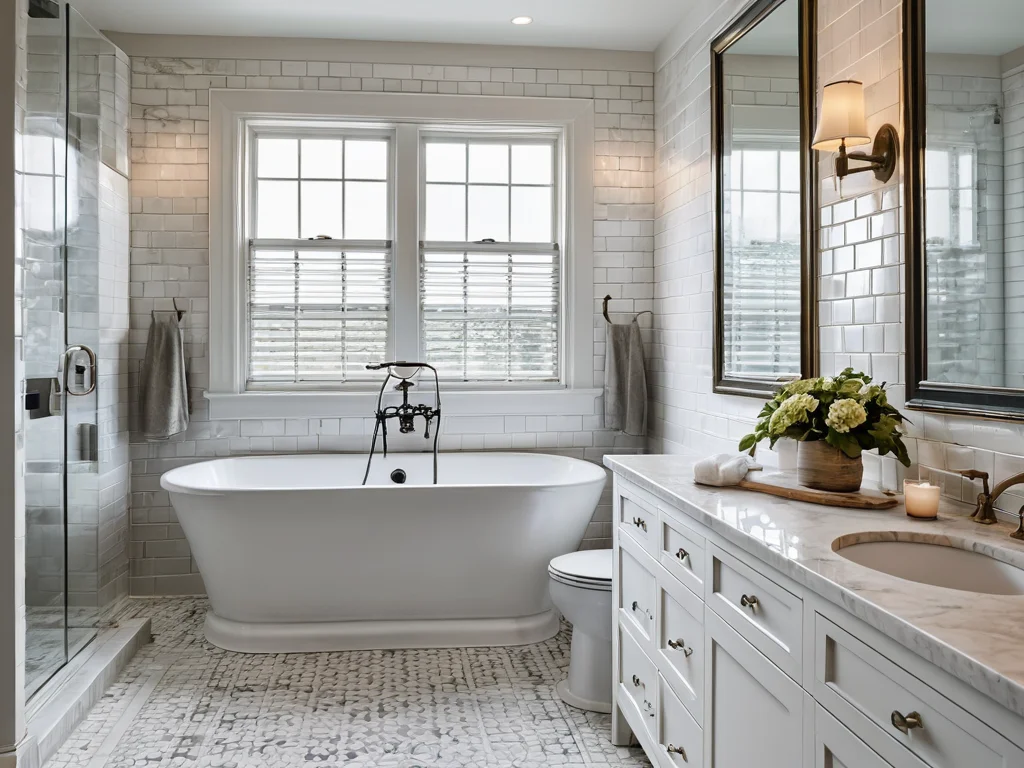
In recent years, bathroom paint has been gaining popularity. This is not surprising, as modern technologies allow for the creation of coatings resistant to moisture and temperature fluctuations. Let’s look at the advantages and disadvantages of this solution.
Advantages of Paint:
- Wide Color Palette: Paint offers almost limitless possibilities for creating a unique design. You can choose any shade, mix colors, create gradients, and complex patterns.
- Ease of Application: Painting walls is a task that even a beginner can handle. It is much simpler and faster than laying tile.
- Ease of Refreshing: If you get tired of the color or want to refresh the interior, repainting the walls will be much easier and cheaper than replacing tile.
- No Grout Lines: A painted surface looks monolithic, without seams, creating a sense of spaciousness and cleanliness.
- Economy: In most cases, paint is cheaper than tile, especially when considering labor costs.
- Tactile Sensations: Painted walls are more pleasant to the touch than cold and hard tile.
Disadvantages of Paint:
- Demanding Surface Preparation: For an ideal result, walls must be perfectly even and smooth. Any defects will be visible under the paint layer.
- Vulnerability to Mechanical Damage: Paint is less resistant to scratches and impacts than tile. It can show marks from furniture or household chemicals.
- Moisture Resistance (Special Paint Required): Ordinary paint is not suitable for bathrooms. You will need special moisture-resistant paint for high-humidity rooms. Even such paint can lose its properties over time or crack with sharp temperature changes.
- Cleaning Difficulty: Some types of paint can absorb dirt and be difficult to clean, especially matte surfaces.
- Potential for Mold: If the paint does not have antibacterial properties or the surface is not sufficiently prepared, mold can appear in bathroom conditions.
Modern bathroom paints are no longer the capricious material they once were. However, their selection and application still require special attention.
Comparative Test: Tile or Paint? Evaluating by 5 Key Parameters
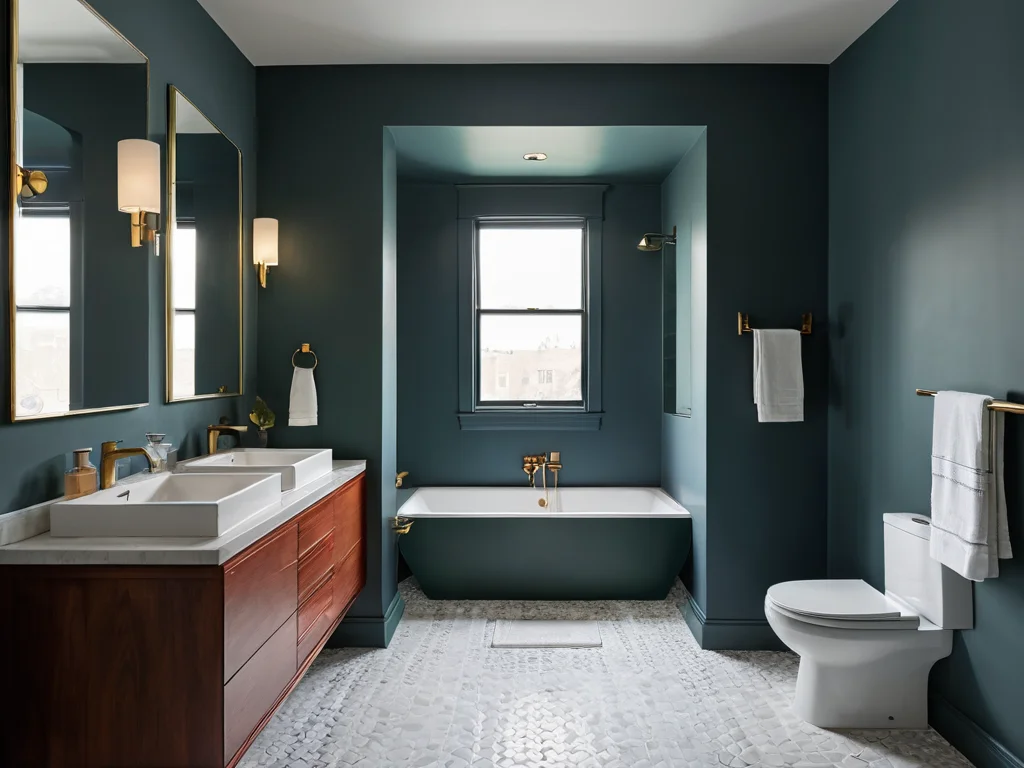
To make a final decision, let’s compare tile and paint based on five key criteria important for a bathroom.
- Moisture Resistance and Durability:
- Tile: Absolute leader. It is not afraid of direct water contact, temperature fluctuations, and retains its properties for decades.
- Paint: Modern moisture-resistant paints cope well with high humidity, but they are more vulnerable to mechanical damage and sharp temperature changes. Durability depends on paint quality and correct application.
- Aesthetics and Design:
- Tile: Offers a huge selection of textures, colors, sizes, and formats. You can create both classic and ultra-modern interiors. However, grout lines can disrupt the integrity of the perception.
- Paint: Allows for perfect smoothness, color uniformity, and the creation of any color solutions and effects. Ideal for minimalism, Scandinavian style, and loft.
- Maintenance and Hygiene:
- Tile: Easy to clean, does not absorb odors, resistant to most cleaning agents. But grout lines require special attention.
- Paint: A smooth painted surface is easy to wipe. It is important to choose washable formulations. Matte surfaces can absorb dirt.
- Cost (Materials + Labor):
- Tile: Generally more expensive. Cost of materials (tile, adhesive, grout) + expensive tiler’s work.
- Paint: Usually cheaper. Cost of the paint itself + minimal costs for surface preparation and painter’s work (or DIY application).
- Ease of Installation and Demolition:
- Tile: Complex and labor-intensive installation. Demolition is even more difficult.
- Paint: Relatively simple installation. Easy repainting or refreshing.
Conclusion: If maximum moisture resistance and durability are your priorities, and you are prepared for higher costs for materials and labor, choose tile. If you want a beautiful, modern interior, save on renovation, and have the ability to easily update it, special bathroom paint will be an excellent solution.
How to Choose the Ideal Tile for Your Bathroom: A Guide to Styles, Sizes, and Care
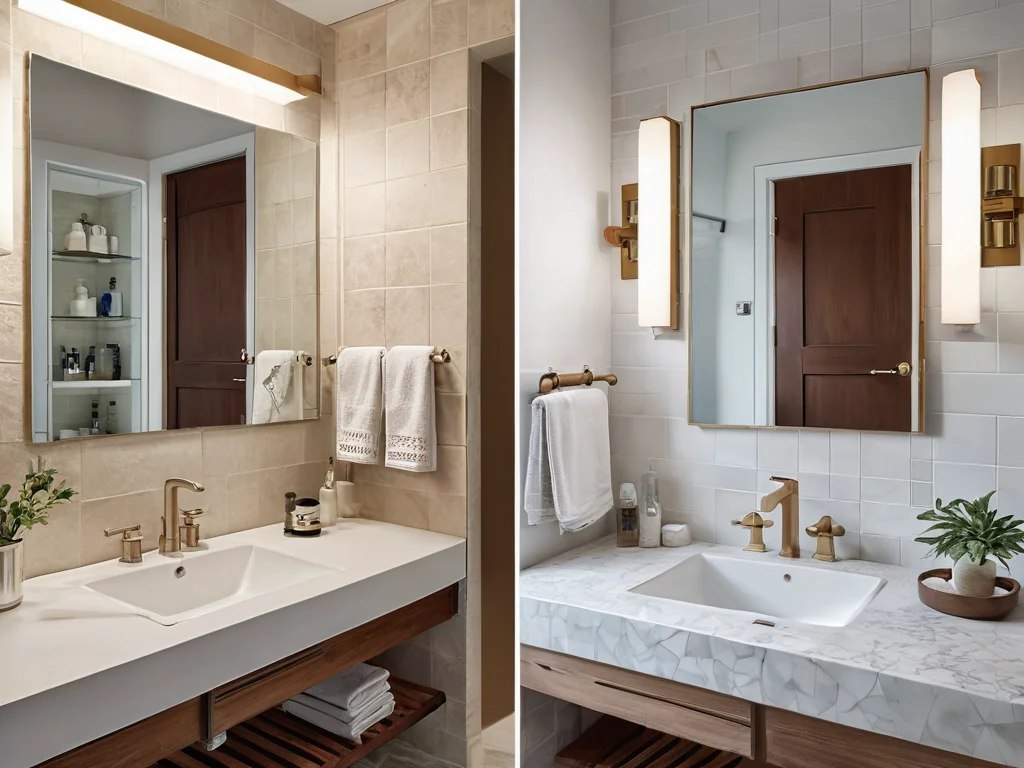
So, you’ve decided to go with tile. Great! But how do you not get lost in this variety? Let’s figure it out.
Types of Tile:
- Ceramic Tile: The most common and affordable option. It tolerates moisture well but may be less durable than porcelain stoneware.
- Porcelain Stoneware: A more durable, dense, and moisture-resistant material. Often imitates natural stone, wood, and concrete. An excellent choice for floors and walls.
- Mosaic: Small elements that allow for complex patterns and the decoration of curved surfaces. Can be used as an accent or for the entire bathroom.
- Natural Stone: Marble, granite, travertine – looks very noble and luxurious, but requires special care and is expensive.
Sizes and Shapes:
- Large Format Tile: Creates the effect of a monolithic surface, visually expands the space. Minimizes grout lines.
- Small Tile (e.g., “subway” tile): A classic option that always looks stylish. Allows for interesting layouts.
- Square, Rectangular, Hexagonal: The choice of shape affects the overall interior style.
Styles and Design:
- Imitation of Natural Materials: Tile that looks like wood, stone, or concrete is a popular trend, allowing for the aesthetics of natural materials with greater practicality.
- Color: Light tones visually enlarge the space, dark tones add depth and elegance. Bright accents will liven up the interior.
- Texture: Matte, glossy, textured – the choice of texture affects the perception of space and tactile sensations.
Tile Care:
- Regular Cleaning: Use mild detergents and a sponge.
- Grout Maintenance: Choose epoxy grout for wet rooms – it is more durable and resistant to dirt. Periodically treat grout lines with special anti-mold products.
- Scratch Protection: Avoid using abrasive cleaning agents and stiff brushes.
Remember that choosing tile is not just a matter of beauty, but also practicality. Consider the size of your bathroom, the style you want to create, and your personal preferences.
Choosing Paint for the Bathroom: What to Look for When Buying and How to Avoid Mistakes
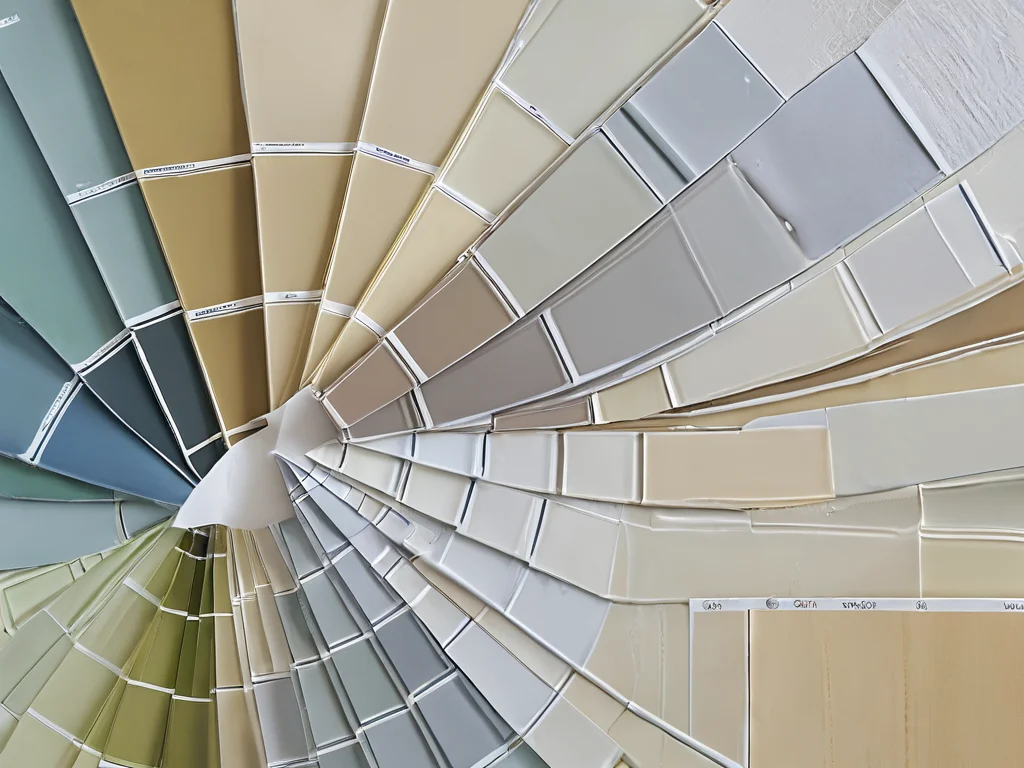
If you decide to use paint, you need to approach its selection very responsibly. Not all paints are suitable for a bathroom.
Key Characteristics of Bathroom Paint:
- Moisture Resistance: This is the most important. Look for markings on the can such as “for bathrooms,” “for damp rooms,” “moisture-resistant,” “washable.” These are usually acrylic, latex, or alkyd enamels.
- Breathability: The paint should “breathe” to prevent condensation buildup under the paint layer, which can lead to mold.
- Resistance to Abrasion and Detergents: Walls in the bathroom often need to be washed, so choose paints that withstand repeated wet cleaning.
- Antibacterial and Antifungal Properties: Some manufacturers add special components to the paint that prevent the growth of bacteria and mold.
- Surface Type: Matte, semi-matte, glossy. Glossy and semi-gloss paints are usually more moisture-resistant and easy to clean, but they highlight all wall imperfections. Matte paints hide minor defects but may be less resistant to washing.
What to Look for When Buying:
- Manufacturer: Prefer well-known brands that specialize in producing paints for specific rooms.
- Composition: Study the label. Look for acrylic or latex paints with the appropriate markings.
- Coverage: Pay attention to the paint’s coverage rate indicated on the can to calculate the required amount.
- Color: Choose a color that matches your interior. Remember that the color on the sample may differ slightly from the color on the wall.
Common Mistakes When Choosing Paint:
- Using Ordinary Paint: Ordinary interior paints are not designed for damp rooms and will quickly deteriorate.
- Neglecting Surface Preparation: Applying paint to unprepared, uneven, or damp walls will lead to poor results.
- Choosing Overly Glossy Paint: It will highlight all wall defects, requiring perfect preparation.
- Skimping on Quality: Cheap paint can quickly lose its properties, crack, or peel.
The correct choice of paint is the key to the durability and beauty of your bathroom.
Step-by-Step Guide: How to Properly Paint Bathroom Walls
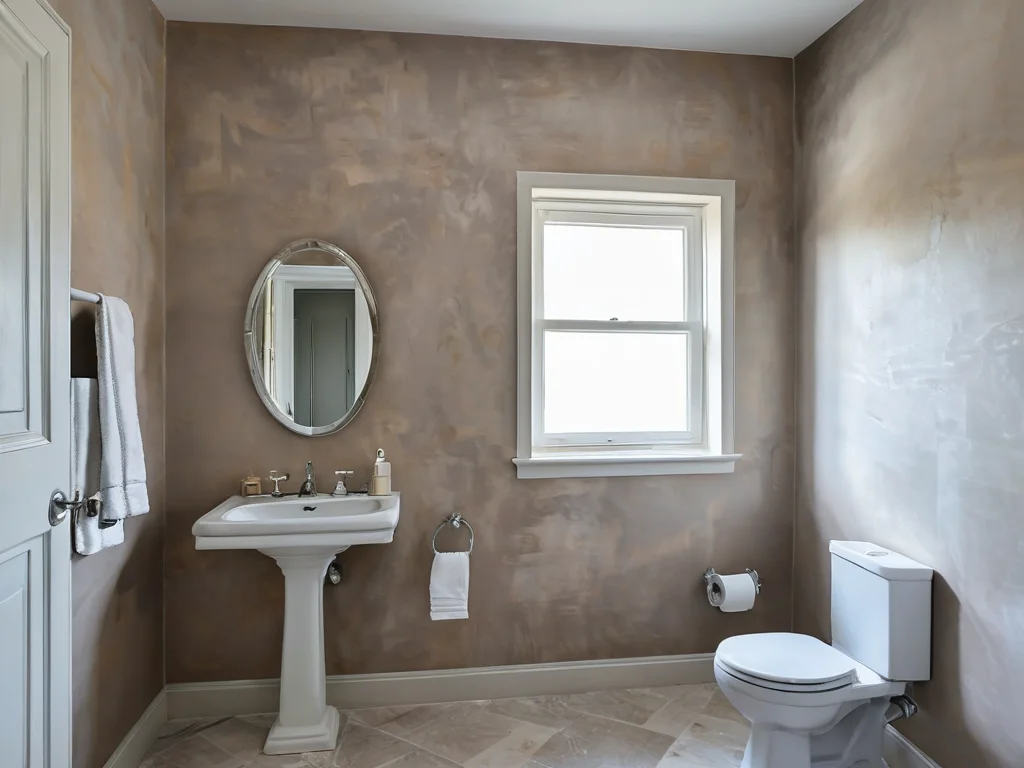
Painting bathroom walls yourself is a perfectly achievable task if you follow the instructions.
Surface Preparation:
- Cleaning: Thoroughly wash the walls, remove dust, dirt, and remnants of old coatings (if any).
- Repair: Fill all cracks, chips, and unevenness with putty.
- Sanding: After the putty dries, sand the surface with sandpaper until perfectly smooth.
- Priming: Apply a special primer for damp rooms. Primer improves paint adhesion, reduces paint consumption, and prevents mold. Let the primer dry completely according to the manufacturer’s instructions.
Painting Process:
- Protection: Cover the floor, plumbing fixtures, and other surfaces with plastic sheeting or paper to protect them from paint. Use painter’s tape to seal the edges where walls meet the ceiling, floor, and door frames.
- First Coat: Start with corners and hard-to-reach areas using a brush. Then, use a roller to evenly apply paint to the main wall surface. Move from top to bottom, trying to avoid drips.
- Drying: Let the first coat of paint dry completely. Drying time is indicated on the can.
- Second Coat: If necessary, apply a second coat of paint, following the same technique as for the first. Two coats are often required to achieve a rich and even color.
- Details: If you are using different colors or creating patterns, let the base coat dry completely before applying the next color or removing painter’s tape.
- Finishing: After the final coat of paint has completely dried, remove the painter’s tape and protective sheeting.
Important Points:
- Ventilation: Ensure good ventilation during painting and drying.
- Temperature: Paint should be applied at the temperature recommended by the paint manufacturer (usually between +10°C and +25°C).
- Tools: Use high-quality brushes and rollers. For water-based paints, it is best to use rollers with short nap.
Patience and accuracy are your main assistants in this endeavor.
Experts Advise: 7 Non-Obvious Life Hacks for Perfect Bathroom Finishes (Tile and Paint)

Let’s gather some valuable tips from professionals in one place that will help you achieve a perfect result, regardless of the material you choose.
- Life Hack #1: Test Paint Color on the WallBefore buying a large quantity of paint, purchase a small can of your chosen shade and paint a small section of the wall. Assess how the color looks in different lighting conditions (daylight and artificial) and in combination with other interior elements. The color on the sample in the store can differ significantly from what you will see in your bathroom.
- Life Hack #2: Use Moisture-Resistant Grout for TileEven if you choose expensive tile, saving on grout can lead to problems. Epoxy grout for bathrooms is an investment in the durability of the grout lines. It does not absorb moisture, is resistant to mold, and is easy to clean.
- Life Hack #3: Combine MaterialsDon’t be afraid to combine tile and paint. For example, the “wet” contact area (around the bathtub, shower cabin) can be finished with tile, and the remaining walls can be painted. This will save money, add originality to the interior, and avoid unnecessary grout lines.
- Life Hack #4: Thoroughly Prepare the Wall for PaintingThis is 80% of success. Unevenness, cracks, old plaster – all of this will spoil the appearance of painted walls. Pay maximum attention to leveling, puttying, and sanding.
- Life Hack #5: Consider VentilationGood ventilation is key to the longevity of both tile (prevents mold on grout lines) and paint. If your bathroom has poor ventilation, it may be worth considering installing an exhaust fan.
- Life Hack #6: Use Painter’s Tape WiselyDon’t skimp on painter’s tape when painting. Carefully seal all seams so that paint does not get where it shouldn’t. When removing the tape, do it slowly and at an angle while the paint is still slightly wet – this will give you a cleaner edge.
- Life Hack #7: Don’t Forget WaterproofingEspecially in areas of direct water contact (around the bathtub, shower cabin, sink), before laying tile or painting walls, be sure to apply a special waterproofing mastic. This will protect the walls from moisture penetration and prevent mold.
I hope this detailed breakdown will help you make the right choice and create the bathroom of your dreams. Remember, the most important thing is to consider all the nuances and approach the process with love and attention. Good luck with your renovation!
